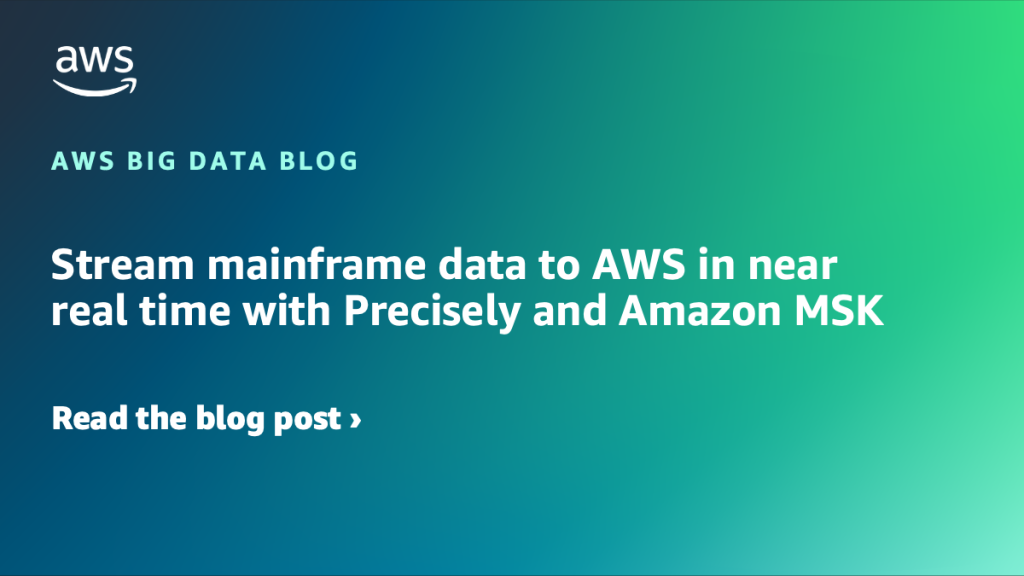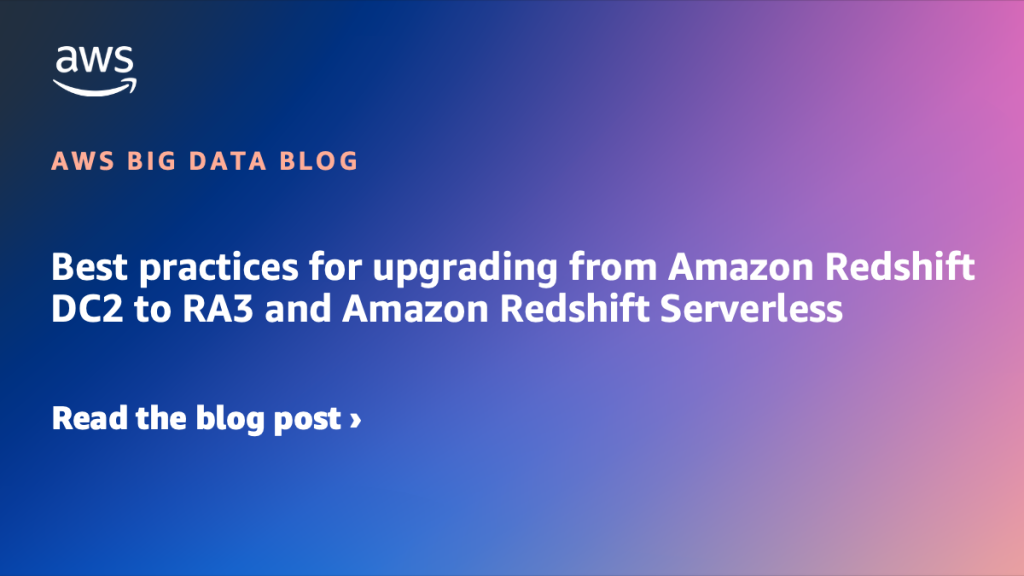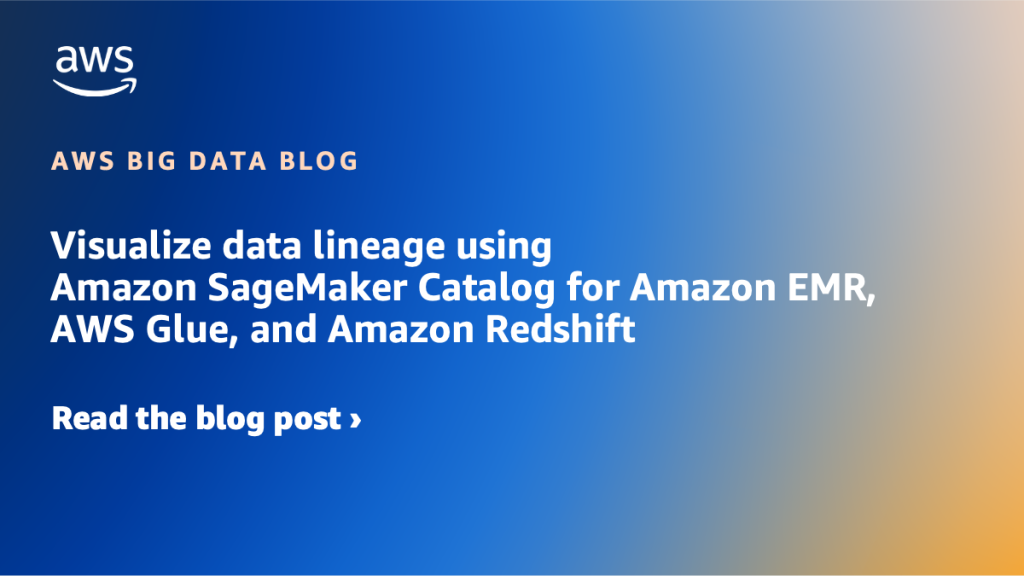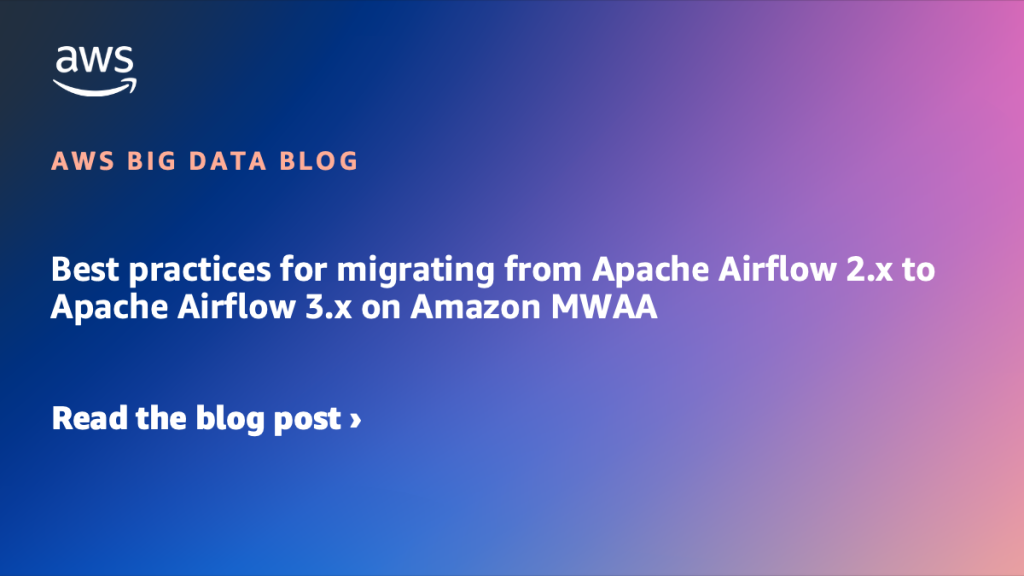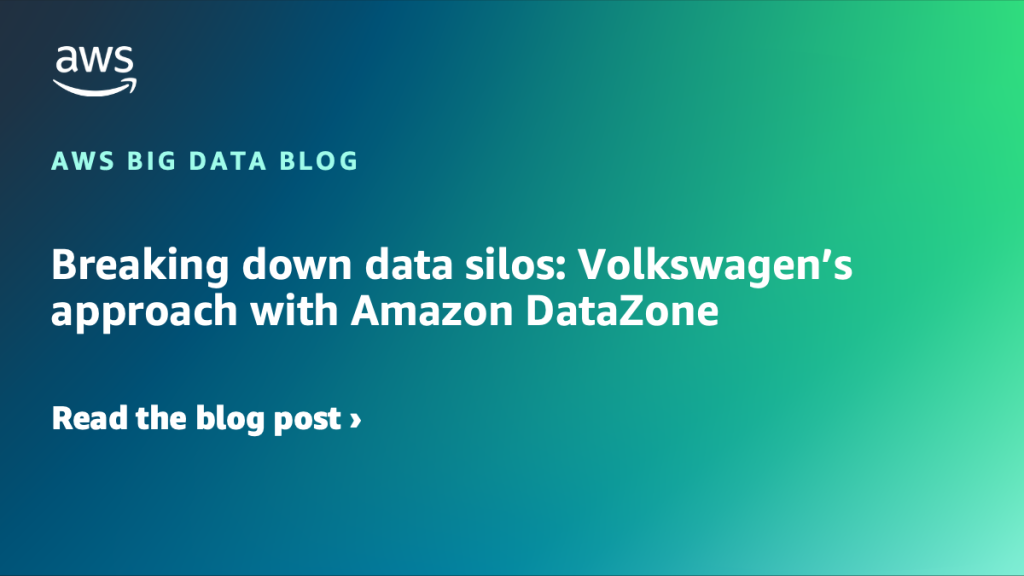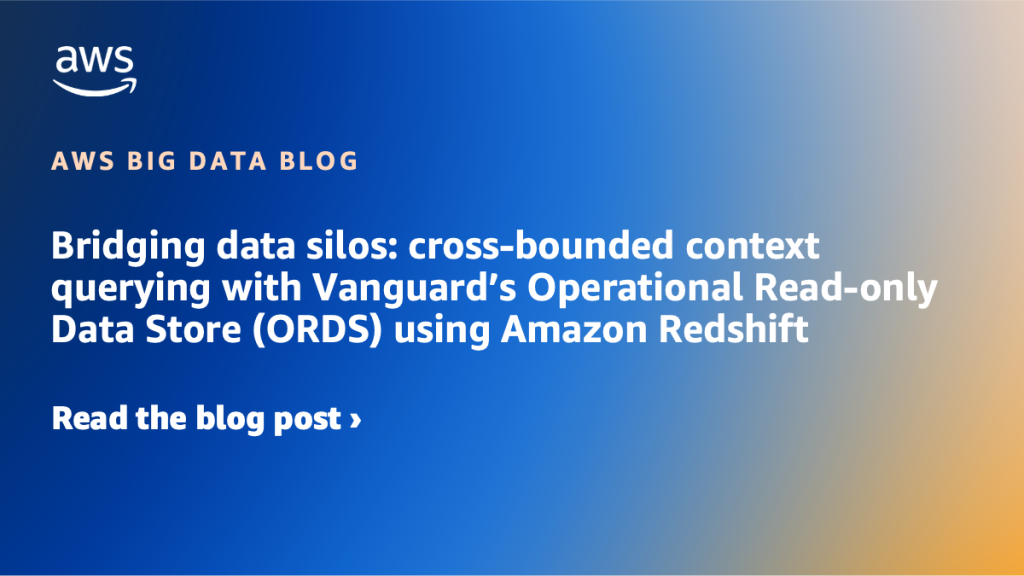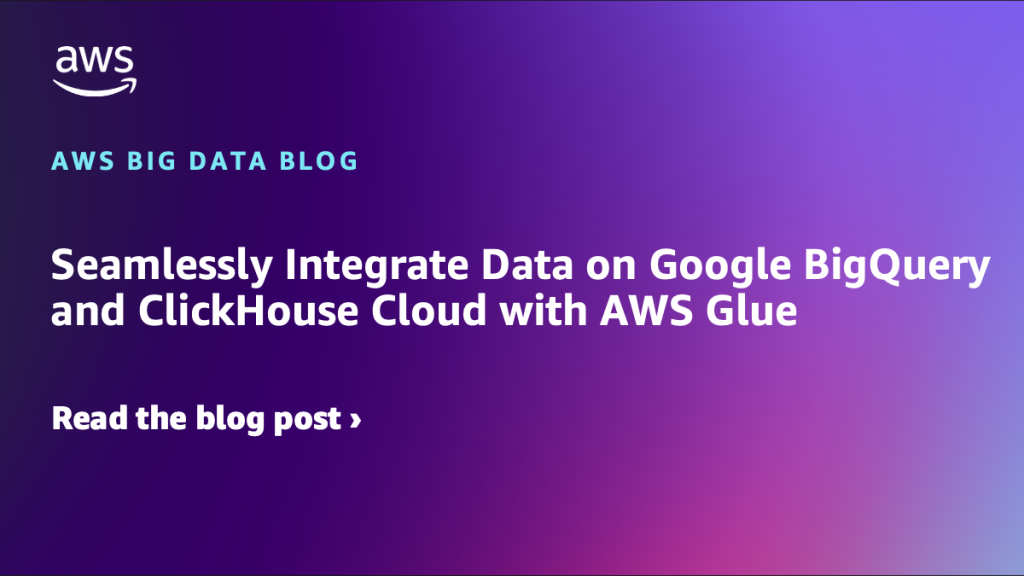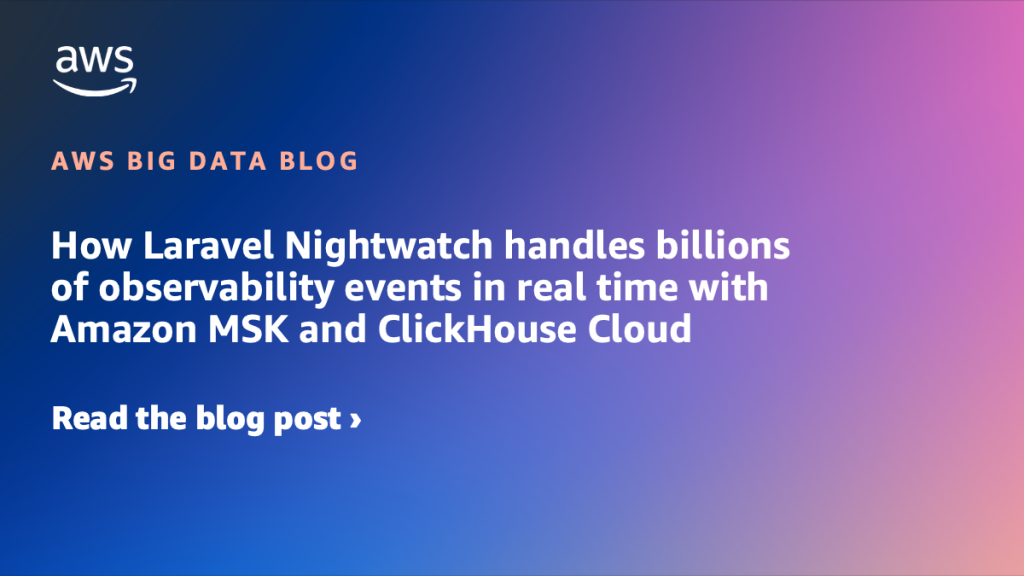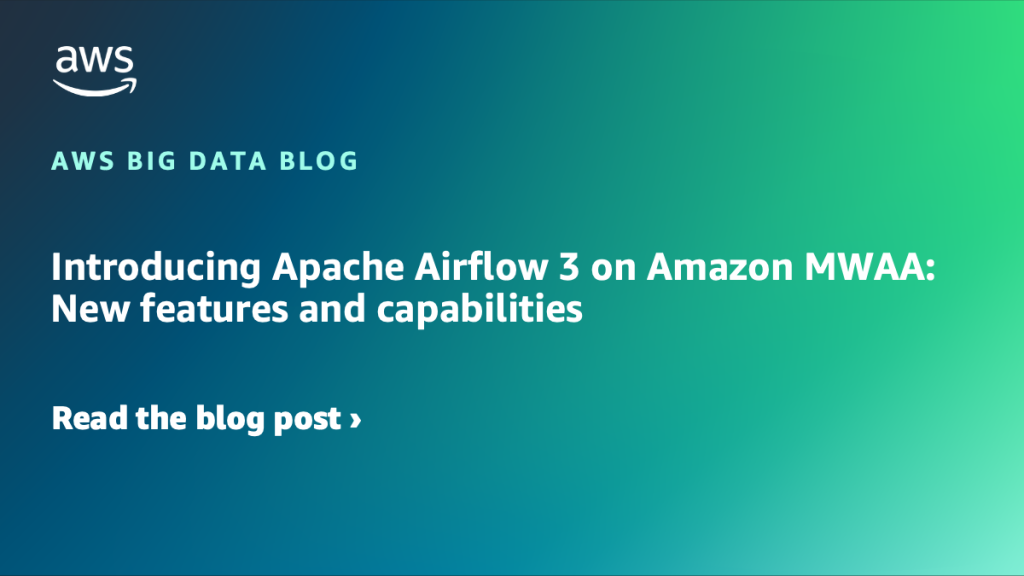AWS Big Data Blog
Category: Learning Levels
Stream mainframe data to AWS in near real time with Precisely and Amazon MSK
In this post, we introduce an alternative architecture to synchronize mainframe data to the cloud using Amazon Managed Streaming for Apache Kafka (Amazon MSK) for greater flexibility and scalability. This event-driven approach provides additional possibilities for mainframe data integration and modernization strategies.
Best practices for upgrading from Amazon Redshift DC2 to RA3 and Amazon Redshift Serverless
As analytical demands grow, many customers are upgrading from DC2 to RA3 or Amazon Redshift Serverless, which offer independent compute and storage scaling, along with advanced capabilities such as data sharing, zero-ETL integration, and built-in artificial intelligence and machine learning (AI/ML) support with Amazon Redshift ML. This post provides a practical guide to plan your target architecture and migration strategy, covering upgrade options, key considerations, and best practices to facilitate a successful and seamless transition.
Visualize data lineage using Amazon SageMaker Catalog for Amazon EMR, AWS Glue, and Amazon Redshift
Amazon SageMaker offers a comprehensive hub that integrates data, analytics, and AI capabilities, providing a unified experience for users to access and work with their data. Through Amazon SageMaker Unified Studio, a single and unified environment, you can use a wide range of tools and features to support your data and AI development needs, including […]
Building a real-time ICU patient analytics pipeline with AWS Lambda event source mapping
In this post, we demonstrate how to build a serverless architecture that processes real-time ICU patient monitoring data using Lambda event source mapping for immediate alert generation and data aggregation, followed by persistent storage in Amazon S3 with an Iceberg catalog for comprehensive healthcare analytics.
Best practices for migrating from Apache Airflow 2.x to Apache Airflow 3.x on Amazon MWAA
Apache Airflow 3.x on Amazon MWAA introduces architectural improvements such as API-based task execution that provides enhanced security and isolation. This migration presents an opportunity to embrace next-generation workflow orchestration capabilities while providing business continuity. This post provides best practices and a streamlined approach to successfully navigate this critical migration, providing minimal disruption to your mission-critical data pipelines while maximizing the enhanced capabilities of Airflow 3.
Breaking down data silos: Volkswagen’s approach with Amazon DataZone
In this post, we introduce Amazon DataZone and explore how Volkswagen used Amazon DataZone to build their data mesh, tackle the challenges encountered, and break the data silos.
Bridging data silos: cross-bounded context querying with Vanguard’s Operational Read-only Data Store (ORDS) using Amazon Redshift
At Vanguard, we faced significant challenges with our legacy mainframe system that limited our ability to deliver modern, personalized customer experiences. Our centralized database architecture created performance bottlenecks and made it difficult to scale services independently for our millions of personal and institutional investors. In this post, we show you how we modernized our data architecture using Amazon Redshift as our Operational Read-only Data Store (ORDS).
Seamlessly Integrate Data on Google BigQuery and ClickHouse Cloud with AWS Glue
Migrating from Google Cloud’s BigQuery to ClickHouse Cloud on AWS allows businesses to leverage the speed and efficiency of ClickHouse for real-time analytics while benefiting from AWS’s scalable and secure environment. This article provides a comprehensive guide to executing a direct data migration using AWS Glue ETL, highlighting the advantages and best practices for a […]
How Laravel Nightwatch handles billions of observability events in real time with Amazon MSK and ClickHouse Cloud
Laravel, one of the world’s most popular web frameworks, launched its first-party observability platform, Laravel Nightwatch, to provide developers with real-time insights into application performance. Built entirely on AWS managed services and ClickHouse Cloud, the service already processes over one billion events per day while maintaining sub-second query latency, giving developers instant visibility into the health of their applications.
Introducing Apache Airflow 3 on Amazon MWAA: New features and capabilities
AWS announced the general availability of Apache Airflow 3 on Amazon Managed Workflows for Apache Airflow (Amazon MWAA). This release transforms how organizations use Apache Airflow to orchestrate data pipelines and business processes in the cloud, bringing enhanced security, improved performance, and modern workflow orchestration capabilities to Amazon MWAA customers. This post explores the features of Airflow 3 on Amazon MWAA and outlines enhancements that improve your workflow orchestration capabilities
